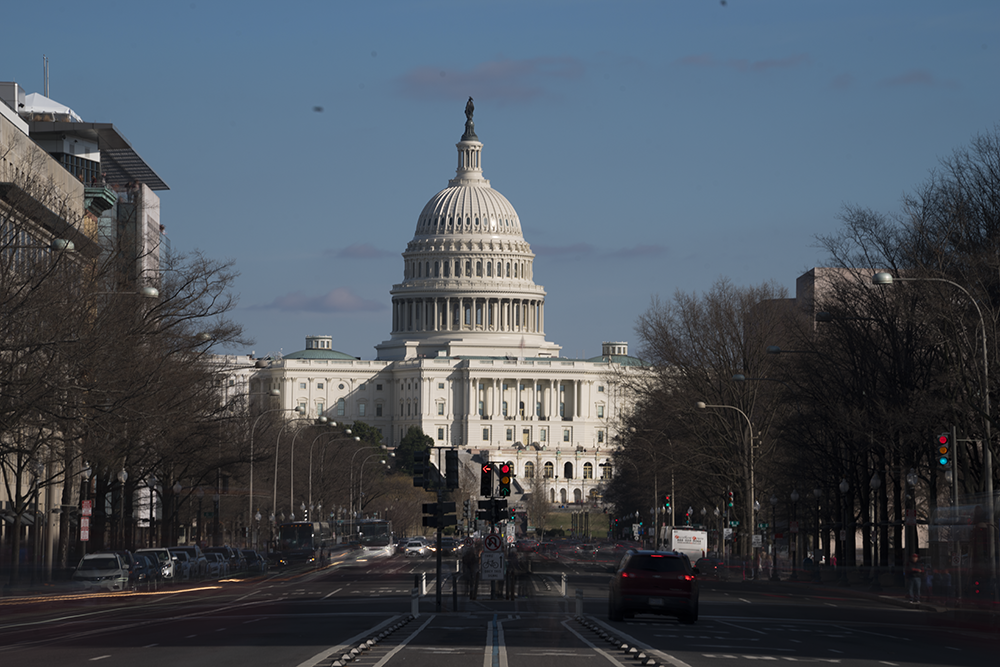A report published by the Georgetown University School of Nursing & Health Studies found that Black residents in Washington, D.C., on average live considerably shorter, less healthy lives than white residents because of systemic disparities in health care, education and wealth.
The report drew on both anecdotal interview data as well as survey and hospital data and found that Black residents are more vulnerable to a variety of diseases and underlying health conditions. The study was prepared from findings gathered before the COVID-19 pandemic, but it notes that Black residents account for 80% of deaths caused by the coronavirus in the District. The report concluded that the racial disparities in COVID-19 mortality rates can be attributed to a “legacy of inequality.”

The report, titled “Health Disparities in the Black Community: An Imperative for Racial Equity in the District of Columbia,” was authored by Chair of Georgetown’s Health Systems Administration Department Christopher King and former Dean of the NHS Patricia Cloonan.
“Black residents in our city face a disproportionate burden of disease, such as cancer, diabetes, heart and respiratory diseases, and obesity,” King said in a statement to The Washington Post. “These health disparities result from long-standing injustices and make the African-American community much more vulnerable to a highly infectious virus like COVID-19.”
The report showed a side-by-side comparison between the residents of Ward 8, where more than 90% of residents are Black, and Ward 3, where only 5% of residents are Black. Residents in Ward 3 have much higher household incomes, greater access to health care providers and more access to quality education than their Ward 8 counterparts. Regarding the health consequences of such disparities, the researchers found that the average resident in Ward 3 will live 16 years longer than the average resident in Ward 8. Ward 3 residents are also 2.5 times less likely to die from cancer and four times less likely to die from heart disease.
Researchers found that the mortality rate for Black infants in the District is four times higher than that of white infants. Black residents are also six times more likely to die from diabetes than their white counterparts. Additionally, the report documented that only 50% of Black residents over the age of 65 receive a flu shot, compared to around three-quarters of white residents older than 65, possibly accounting for why the death rate for influenza among Black residents is 1.5 times higher than that of white residents.
The report was commissioned by Maurice Jackson, an associate professor in the history department who also served as the inaugural chair of the D.C. Commission on African American Studies from 2013 to 2016. It is the second edition of the report, following up on a 2016 version that was prepared for the D.C. Commission on African American Studies.
While Jackson was satisfied with the final report, he expressed sadness at the results and said that the pandemic has only further exacerbated the inequities made public in the report.
“The preparation of the second edition of the report began before we knew of the seriousness of the COVID-19 crisis,” Jackson wrote in an email to The Hoya. “But I hope that its release adds to the understanding as to how it has a devastating effect on the African American community.”
Though the District as a whole appears to have become healthier and wealthier in recent years, King hopes this data will paint a more sobering picture of who is really thriving in this changing environment.
“The city is changing. Younger, affluent people are moving into the city. These trends make the overall health profile look good when compared with other cities,” King wrote in an email to The Hoya. “However, when health and socioeconomic data are stratified by race, there is a completely different narrative.”
Grace Keegan (COL ’21), an undergraduate research assistant who collected numerical data for the publication, said she hoped her role in presenting this data graphically would help convey the economic and health consequences of structural inequality to a broader audience.
“What I liked most about this work was the task of taking the numbers and presenting them in a way (both visually and rhetorically) that would best communicate the drastic need for health equity to our audience,” Keegan wrote in an email to The Hoya. “I hope that others gain a better understanding of the complex social and economic structures that contribute to widespread societal inequality, which results in the health disparities outlined in the report.”
The report concluded with a set of recommendations that could be implemented across local government, philanthropic and health care sectors to achieve racial equity in health.
“One sector cannot fix the problem. The journey to racial equity requires an explicit and cross-sector approach to eliminate social, economic, and environmental conditions that stymie upward mobility and compromise well-being across the lifespan,” the report reads.
Keegan hopes the study’s results will similarly compel others to help address the deep-seated health inequalities in the District.
“This work was quite a challenge but has solidified my dedication to working in public health to reduce health disparities in my future,” Keegan wrote. “I hope people are moved to act by diverse means to address the socioeconomic determinants of health in order to comprehensively and effectively advance health equity.”




















